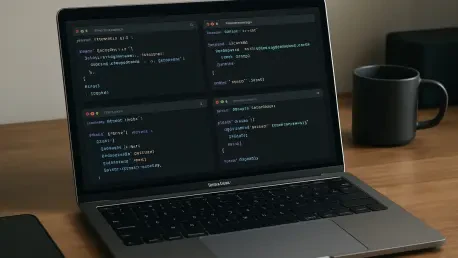In an era where cross-platform development continues to redefine how mobile apps are built, Snapchat’s release of Valdi, an open-source UI framework, has sparked intense discussion among developers and tech enthusiasts. With the promise of compiling TypeScript directly into native views for iOS, Android, and macOS, Valdi aims to deliver true native performance without the overhead of web views or JavaScript bridges. This roundup dives into diverse perspectives from industry professionals, beta testers, and framework analysts to uncover what makes this tool a potential disruptor in UI development. The goal is to synthesize varying opinions, tips, and critiques to provide a comprehensive view of Valdi’s impact and potential.
Unpacking Valdi: Initial Impressions from the Tech Community
Valdi’s introduction as an open-source project after years of internal use at Snapchat has generated a wave of curiosity. Many in the tech community view this as a bold step toward redefining cross-platform efficiency. Developers who have followed Snapchat’s trajectory note that the framework’s focus on native performance addresses long-standing frustrations with slower, less responsive solutions. The excitement centers on how Valdi bypasses traditional limitations, offering a fresh approach to building seamless user interfaces.
Feedback from early adopters highlights a mix of enthusiasm and caution. Beta testers appreciate the framework’s ability to streamline workflows by eliminating unnecessary layers in the rendering process. However, some express reservations about its readiness for widespread adoption, pointing to the need for more robust documentation and tutorials to ease the onboarding process. This duality of optimism and concern sets the stage for a deeper exploration of Valdi’s features and challenges.
A recurring theme in initial reactions is the potential for Valdi to influence broader industry standards. Analysts suggest that if the framework gains traction, it could push competitors to prioritize native compilation over hybrid approaches. This shift might encourage a new wave of tools designed with performance as the cornerstone, reshaping expectations for cross-platform development in the coming years.
Diving into Valdi’s Core Features: Expert Insights and Critiques
Native Performance through Innovative Compilation
At the heart of Valdi’s appeal is its groundbreaking method of converting TypeScript directly into platform-specific views. Industry professionals praise this feature for delivering near-native performance, a significant leap over frameworks reliant on JavaScript bridges. Comments from beta users emphasize how this compilation process reduces latency, making applications feel more responsive on diverse devices.
Further analysis reveals that Valdi’s use of a C++ layout engine and automatic view recycling garners particular admiration. Software engineers with experience in cross-platform tools note that these elements minimize resource consumption, a critical factor for mobile apps where battery life and speed are paramount. This technical edge positions Valdi as a strong contender in a crowded market of UI frameworks.
Despite the acclaim, some skepticism persists regarding its beta status. A segment of the development community warns that achieving consistent integration across varied hardware remains a hurdle. These concerns underscore the importance of ongoing testing and refinement to ensure Valdi fulfills its promise of seamless performance in real-world scenarios.
Efficiency in Rendering and Developer Workflow
Valdi’s rendering techniques, such as viewport-aware rendering and component optimization, have also drawn significant attention. Feedback from developers who have implemented Valdi in test projects indicates that these features drastically cut down rendering times, enhancing both speed and user experience. Such optimizations are seen as a major advantage for teams working on tight schedules.
Comparisons with established frameworks like React Native surface in discussions, with many pointing out Valdi’s competitive edge in performance but acknowledging a steeper learning curve. Programmers familiar with other tools suggest that while the framework offers impressive efficiency, newcomers might struggle without prior experience in TypeScript or native development. This trade-off between power and accessibility remains a key talking point.
Tips from experienced users include starting with small-scale projects to grasp Valdi’s rendering nuances before scaling up. This practical advice aims to help mitigate the initial complexity, ensuring developers can leverage the framework’s strengths without becoming overwhelmed by its intricacies. Such insights are invaluable for those considering adoption at this early stage.
Open-Source Dynamics and Community Potential
The decision to open-source Valdi, even in beta, has sparked debate about its long-term evolution. Many in the developer community applaud this move, arguing that community collaboration will accelerate improvements and uncover innovative use cases. Enthusiasts predict that global contributions could lead to platform-specific enhancements tailored to niche needs.
On the flip side, a few voices express concern over the risks of releasing an unfinished product. Some analysts caution that without strict quality control, the framework’s development might fragment, leading to inconsistent updates or unsupported features. This perspective urges caution in relying on Valdi for critical projects until a more stable version emerges.
Practical suggestions from open-source advocates include active participation in forums and contributing feedback to shape Valdi’s roadmap. By engaging with the community, developers can help address gaps and ensure the framework evolves in a way that benefits a wide range of users. This collaborative spirit is seen as a cornerstone of Valdi’s potential success.
Developer Empowerment and Broader Implications
Beyond technical prowess, Valdi’s role in empowering developers is a topic of keen interest. Industry observers note that the framework aligns with a growing trend of providing tools that prioritize flexibility and autonomy. Comparisons with updates in frameworks like Next.js suggest that Valdi could inspire similar innovations, such as integrations with AI-driven debugging tools.
Feedback from freelance developers highlights how Valdi’s structure allows for greater customization compared to more rigid alternatives. This adaptability is seen as a boon for those working on bespoke projects, where tailored solutions are often necessary. Such empowerment could redefine how smaller teams approach complex UI challenges.
Speculation also abounds on how Valdi might influence future toolsets. Some professionals envision a ripple effect, where its open-source nature encourages the creation of complementary plugins or extensions. These possibilities, while still theoretical, fuel optimism about Valdi’s capacity to drive a new era of developer-centric innovation.
Key Takeaways from the Valdi Discussion
Reflecting on the diverse opinions surrounding Valdi, several insights stand out. The framework’s native performance, driven by direct TypeScript compilation and optimized rendering, consistently earns praise as a game-changer. However, its beta status and learning curve temper some of the enthusiasm, with calls for improved resources and cautious adoption echoing across the community.
Community-driven evolution emerges as both a strength and a challenge. While open-source collaboration offers immense potential for growth, the risk of uneven development quality remains a concern. Tips from users and analysts alike stress the importance of active engagement to refine Valdi into a reliable tool for all.
For developers eager to explore Valdi, starting with pilot projects and contributing to its open-source ecosystem prove to be actionable strategies. These steps, combined with patience for its maturation, offer a balanced approach to harnessing its capabilities. The discussion around Valdi ultimately reveals a tool with transformative promise, tempered by the need for continued refinement.
Reflecting on Valdi’s Impact and Next Steps
Looking back, the conversations surrounding Valdi paint a picture of a framework that challenges conventional approaches to UI development. The blend of excitement and constructive criticism from developers, testers, and analysts alike underscores its potential to reshape cross-platform standards. Each perspective adds depth to understanding how this tool could fit into the broader tech landscape.
Moving forward, a practical next step involves deeper engagement with Valdi’s open-source community to address current limitations and expand its feature set. Developers are encouraged to experiment with its beta version in controlled environments, providing feedback that could steer future updates. This hands-on approach promises to bridge the gap between potential and practicality.
Additionally, keeping an eye on how Valdi integrates with emerging technologies, such as AI-enhanced tools, offers another avenue for exploration. Staying informed about complementary resources and community-driven innovations could further enhance its utility. These considerations provide a roadmap for leveraging Valdi’s strengths while navigating its early-stage challenges.









